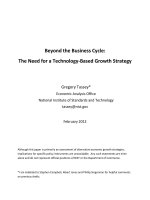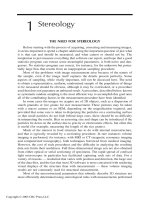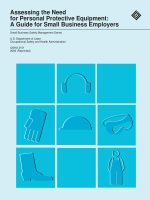The need for auxiliary verbs 3
Bạn đang xem bản rút gọn của tài liệu. Xem và tải ngay bản đầy đủ của tài liệu tại đây (13.08 KB, 1 trang )
The need for auxiliary verbs
In English, we use special forms of the verb phrase to express a lot of important meanings – for example,
questioning, willingness, possibility, obligation, certainty etc. The problem is that English verbs do not have many
different forms: the maximum is five. So to express all of these meanings we use a special kind of verbs called
auxiliaries.
There are two kinds of auxiliary verbs: primary auxiliaries and modal auxiliaries.
Be, do and have
Be (is, am, are, was, were) is used with other verbs to make progressive and passive verb forms.
It is raining.
She was punished for stealing.
Do is used to make questions, negatives and emphatic forms of non-auxiliary verbs.
Does she smoke?
He didn’t come.
Do sit down.
Have is used to make perfect tense forms.
What has she done?
Modal auxiliary verbs
The verbs will, would, shall, should, can, could, may, might, must and ought are called modal auxiliary
verbs. Modal auxiliary verbs are used with other verbs to express various ideas, mostly to do with degrees of
certainty or obligation.
Other verbs
Other verbs which are used in verb + verb structures are not usually called auxiliary verbs. An important
difference between auxiliary verbs and other verbs is that in auxiliary verb structures, questions are made by
simply changing the order of the subject and auxiliary verb. In other verb + verb structures the auxiliary do has to
be added.
She seems to understand.
She doesn’t seem to understand.
Does she seem to understand?
He is swimming.
He isn’t swimming.
Is he swimming?
Stay on top of your writing! Download our grammar guide from www.englishgrammar.org to stay up-to-date.
Powered by TCPDF (www.tcpdf.org)









